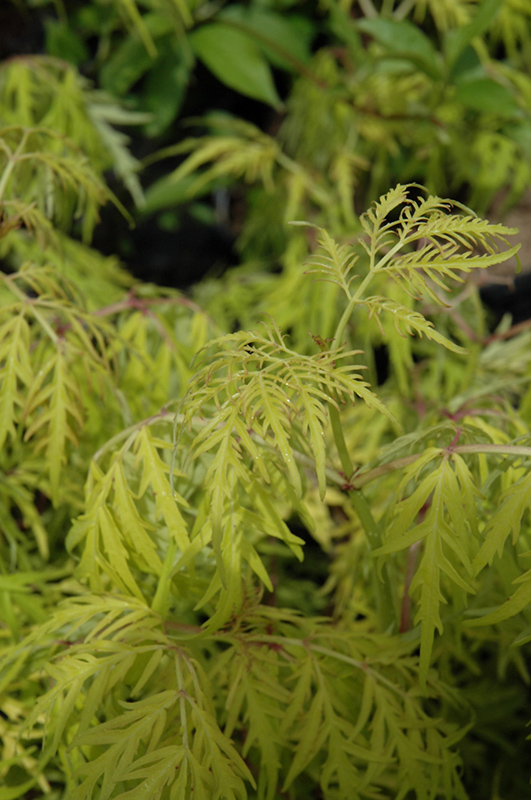Lemony Lace Elder
Sambucus racemosa 'SMNSRD4'
Height: 5 feet
Spread: 5 feet
Sunlight:
![]()
![]()
Hardiness Zone: 3
Other Names: European Red Elder
Brand: Proven Winners
Description:
A refined yet durable garden shrub featuring beautiful, threadlike golden foliage all season; creamy white flowers in spring followed by bright red berries; compact and upright habit, a reliable color accent for the garden
Ornamental Features
Lemony Lace Elder features showy clusters of lightly-scented creamy white flowers held atop the branches in mid spring. It has attractive gold deciduous foliage which emerges antique red in spring. The deeply cut ferny compound leaves are highly ornamental but do not develop any appreciable fall color. The red fruits are held in abundance in spectacular clusters in early fall.
Landscape Attributes
Lemony Lace Elder is a dense multi-stemmed deciduous shrub with an upright spreading habit of growth. Its relatively fine texture sets it apart from other landscape plants with less refined foliage.
This shrub will require occasional maintenance and upkeep, and is best pruned in late winter once the threat of extreme cold has passed. It is a good choice for attracting birds to your yard. It has no significant negative characteristics.
Lemony Lace Elder is recommended for the following landscape applications;
- Accent
- Mass Planting
- Hedges/Screening
- General Garden Use
- Naturalizing And Woodland Gardens
Planting & Growing
Lemony Lace Elder will grow to be about 5 feet tall at maturity, with a spread of 5 feet. It tends to be a little leggy, with a typical clearance of 2 feet from the ground, and is suitable for planting under power lines. It grows at a fast rate, and under ideal conditions can be expected to live for approximately 30 years.
This shrub does best in full sun to partial shade. It is very adaptable to both dry and moist locations, and should do just fine under average home landscape conditions. It may require supplemental watering during periods of drought or extended heat. It is not particular as to soil type or pH. It is highly tolerant of urban pollution and will even thrive in inner city environments. Consider applying a thick mulch around the root zone in both summer and winter to conserve soil moisture and protect it in exposed locations or colder microclimates. This is a selected variety of a species not originally from North America.

